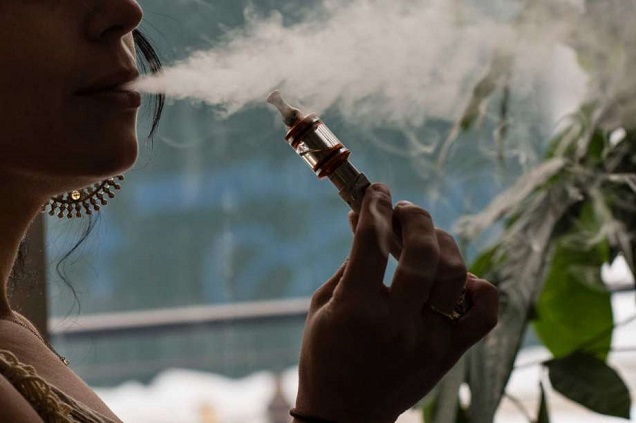
As everyone has heard by now, the FDA’s disastrous proposal to regulate e-cigarettes as tobacco products has gone ahead with none of the changes vaping advocates may have been hoping for. As it stands, unless the device or juice you’re planning on selling is substantially equivalent to something that was on the market before February 2007 (spoiler: it isn’t) then you have to submit a pre-market application, which takes absolutely ages and costs a ton of money.
Since not much has really changed, much of the analysis of the impacts of this move based on the first draft applies just as well now as it did then (check out CASAA’s old assessment, for example), and several new posts on the regulations re-state the same core points and unanimously criticize the FDA for what amounts to an out-and-out ban through excessive and pointless bureaucracy. It’s death by paperwork. Or, to be more accurate, death to all of those who can’t afford millions of dollars and almost 2,000 working hours to be put into applications for every single product you market. It’s “death to all non tobacco company e-cigs” by paperwork. NJOY and similar large independents will weather the storm, but you get the picture. It’s been estimated that 99 % of products won’t even go through the application process.
So, if you’re inexplicably behind on the news, that’s the Cliffsnotes version. CASAA is currently in the process of looking over the regulations and providing a detailed look at the legal aspects of it. As they said, the 500-page PDF containing the meat of this impending public health disaster is written in “reg speak” that is almost purposefully impenetrable to anybody without extensive experience in looking over this type of thing. I’d recommend you keep an eye out for their post and look at some of the other great articles laying out the exact problems. Clive Bates has a great bluffers’ guide to the FDA e-cig regulations that lays out everything you need to know to understand what’s happening and what the key issues are.
Here are a some more posts looking at the regulations and the problems with them:
- The Rest of the Story (Michael Siegel): FDA E-Cigarette Deeming Regulations are a Disaster for Public Health
- The Rest of the Story (Michael Siegel): FDA Draft Guidance Confirms that Deeming Regulations Will Decimate the E-Cigarette Industry
- E-Cigarette Research (Dr. Konstantinos Farsalinos): FDA deeming regulation on e-cigarettes: an effective ban on most (and on most effective) products
- CASAA: New FDA E-cigarette Regulations Condemned by CASAA
- Vapor Technology Association: FDA’s Deeming Regulation Went From Bad to Worse for the Vapor Industry
- SFATA: Statement on FDA’s Final Deeming Rule
- Foundation for Economic Education: How the FDA Is Helping Big Tobacco and Encouraging Teen Smoking
Here, I’ll offer a look at some of the core issues around the regulations, specifically: why we shouldn’t throw away almost 10 years of innovation in vaping technology for no benefit, why vapers can easily get by on the black market, and why the people who will really suffer will be the smokers yet to switch.
Why 2007’s E-Cigarettes Suck
So, as per the FDA’s guidance, let’s take a trip down memory lane and look at some of the “excellent” devices that were on the market in 2007. Bill Godshall took the ECF looking for some once. All there were are crappy cigalikes. And I mean really crappy, look:

This is the sort of thing we’d have laid into even in the early days when cigalikes were still the main type of device on the market. The designs look awful, and the performance was almost certainly even worse.
But they’re not just the sort of thing that reviewers would critique; they’re not as good for smokers either. With evidence that they don’t deliver nicotine very efficiently (vape for an hour and you still don’t get as much you would by smoking for just five minutes), that they deliver nicotine to you less consistently than newer devices, that most long-term vapers move away from them and that they’re worse for smokers trying to quit, there is no way this grandfather date even remotely represents the interests of smokers or vapers. It is, without question, thoroughly ridiculous to take the technology back to the state it was at nine years ago.
This “grandfather date” is the most widely-criticized section of the new regulations, and it’s easy to see why. With an estimated cost of $330,000 per product to submit the application and eating up 1,700 hours of labor time each, this is a huge, insurmountable burden for the vast majority of companies on the market. The regulations strangle innovation by setting the latest date for substantial equivalence back in the early days of cartomizers – the equivalent of the Stone Age for the rapidly-developing technology – and then imposing a huge burden on anybody who wants to bring something new to market.
The result is that vastly fewer products will be available from the point when the regulations fully go into effect. The main benefactors will be the tobacco industry, since they have the means and experience to go through the process, plus they all make e-cigs that could be reasonably compared to the devices that were on the market in 2007, so if anybody could get through the substantial equivalence pathway, it would be them. Oh yeah, and even though the reality doesn't quite live up to the theory, you can theoretically show that a new cigarette is substantially equivalent to something on the market before fairly simply, because there were plenty of cigarettes around in 2007.
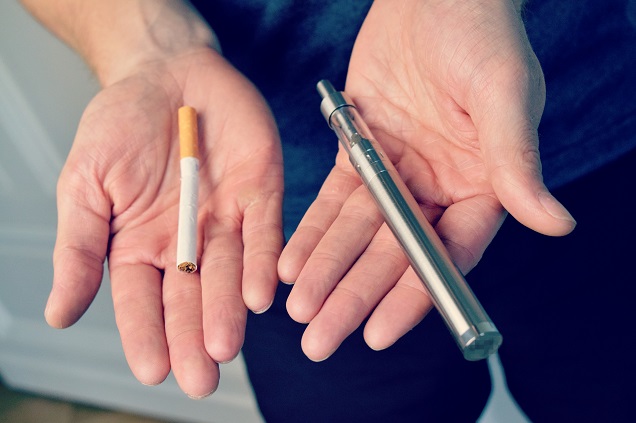
This is where HR 2058 comes in. This bill aims to change the grandfather date, and in the process could save vaping products from having to go through the pre-market review pathway and allow them to be classed as substantially equivalent to more recent products. However, as the guidance for demonstrating substantial equivalence shows, manufacturers will still need to submit side-by-side comparisons of ingredients, components, lists of harmful and potentially harmful constituents, and more.
This will still require plenty of work, chemical testing and more, with the estimated paperwork requirements being 360 hours per product. As soon as you start looking at a full, realistic product line-up, it’s still quite a substantial amount of work. Compared to the excessive requirements of a new application, though, it’s a walk in the park.
As things stand, it appears as though any products on the market on the effective date of the rule (90 days from today) have two years to submit an application, and if they do so, they can remain on sale for another year after that. For new products, things don’t look so rosy. The FDA writes (at the bottom of page 143):
We note that any new tobacco product that was not on the market on the effective date of the rule (i.e., 90 days after the publication date) is not covered by this compliance policy and will be subject to enforcement if marketed without authorization after the effective date.
In other words, the devices on sale 90 days from today are literally the only ones that will be available in the US, unless they go through the pre-market authorization process. As Greg Conley commented, it seems that the market will “freeze” in 90 days.
The Inevitable Black Market: The E-Juice and Mods Are Out of The Bag
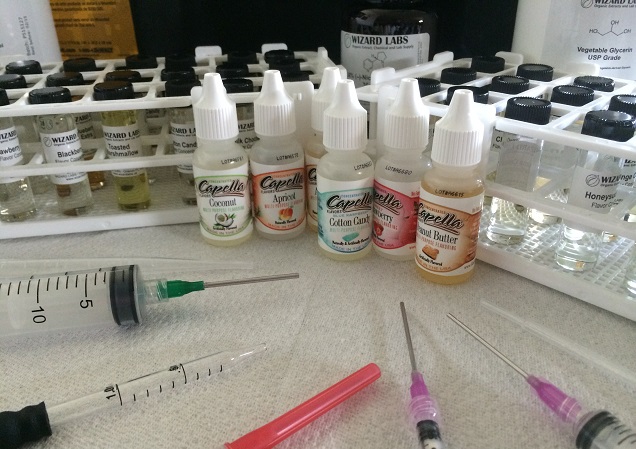
So let’s imagine, as hard as this may be, that our hopes of HR 2058 saving vaping are unceremoniously dashed in a callous display of regulatory apathy. This leads to one of the biggest talking-points in response to the final deeming regulations: black markets.
Clive Bates has written a great post on just how easy it is to get everything you need to put together your own e-liquid, and Carl V. Phillips has an older post that hits on all the key points about the inevitable black market. As most vapers know, e-liquid is made of nicotine, PG, VG and various food flavorings, all of which can be easily bought, whether before the regulations come into effect or afterwards.
For PG, VG and food flavorings, although I may not have the legal expertise to confirm this, it seems almost impossible that these could successfully be classed as “tobacco products” and made subject to the deeming regulations. They all require further processing to be made into a tobacco product, so on the basis of that they should be exempted. Whether nicotine “base” solutions used for DIY are covered or not, this is the only thing vapers would potentially need to stock up on prior to the regulations coming into force.
Points like this seem to be generating the most confusion, and CASAA has pointed out that the FDA now has a hotline for anybody with questions about the rules. These suggested questions hit on some of the key points relevant to the black market:
- Will I still be able to DIY at home or do I need to register as a tobacco manufacturer?
- Will kanthal wire and cotton balls now be considered tobacco products?
- If I buy vegetable glycerine from a vape store, is it a tobacco product? If yes, what about if I buy it at a Walmart?
I did call and make a fruitless attempt to get these questions answered, but I wasn’t able to get through to anyone either as a member of the public or a member of the press.
Interesting though the answers to these questions (and the others) would be, it goes without saying that one way or another, there will be a black market in e-liquid. Once you have all of the materials, actually going through the process of putting a juice together is incredibly easy, so even if a potential vaper didn’t want to make an e-juice personally, it almost certainly wouldn’t be too hard to find someone who was willing.
At this point, all of the potential protections that could be afforded by reasonable regulations are completely lost. It really will be a Wild West industry. Although we may hope that people adopting practices to maximize purity and minimize contamination, nobody would have any sort of re-assurance. Much more, the risks of poisoning will be drastically increased as the number of vapers with a supply of actually dangerous high-strength nicotine rises exponentially.
During alcohol prohibition, hundreds of people died from drinking crappy home-made moonshine. These often contain methanol, aka “wood alcohol,” which has a way of sending people blind or worse. Of course, you wouldn’t expect anything so serious to happen from DIY e-juice making, but it’s hard not to draw the comparison: when you ban something (or do something which amounts to a ban, like the FDA’s proposed rule) people will work around it, and even if it isn’t too serious, this will lead to products that are more dangerous to consumers. Christopher Snowdon’s book on prohibition, The Art of Suppression, contains many similar stories which all have the same key message: prohibition doesn’t stop use of the prohibited substance, it just means people get more dangerous versions from less reputable sources.
So it really goes without saying that there will be a black market in e-liquid, and it will undoubtedly involve a lot more deviations in nicotine strength, no way of knowing whether diacetyl, say, is in the juice you’re buying, and very little way of knowing anything else. It’ll probably be fine (though mixing yourself is obviously preferable), but the risks associated with a “Wild West” will increase. Despite proclamations to the contrary, the FDA rules don’t spell the end to the Wild West industry, they will create a new, wilder west.
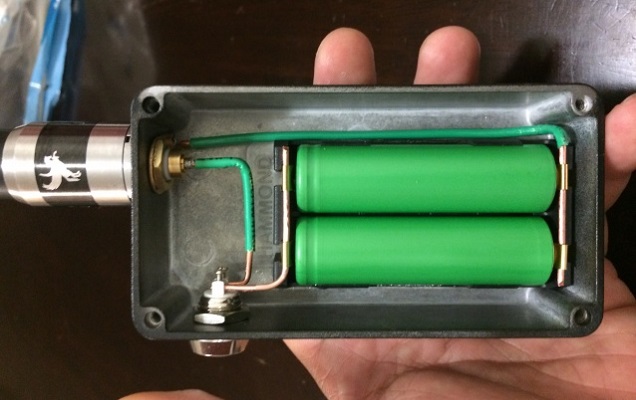
There is also another point that Clive Bates didn’t cover, but is equally important. E-liquid is easy to make, but so are devices. When you get right down to it, an e-cigarette is just a device that supplies an electrical current to a section of resistance wire. If you want something that is comfortable to use and effective (with well-made atomizers, mouthpieces and possibly variable voltage e.t.c.), expertise will be required, but, at the most basic level, to vaporize e-juice, all you really need is a bit of kanthal, some wire and and a battery. Given that there are already tons of guides to making your own mods, the idea that hardware will stay off the black market is pretty much hopeless. Will you have assurance that these devices are electrically safe to use as intended? NO! But they’ll still be there.
This all stresses the key point: for vaping devices and liquids, the proverbial cat is out of the bag. Pandora’s box mod has been opened up, and what’s inside isn’t all that complicated. Very few people would consider doing something like this in a market already chock-full of affordable vaping devices, but if it did ever become difficult to access advanced e-cigarettes, it would be as inevitable as the trade in DIY e-juice.
In reality, there are already so many devices out there that making a mod or an atomizer from scratch is unlikely to be necessary. As long as vapers have batteries, cotton and kanthal, nothing else is really needed. The simplest way to continue vaping would be with a mod with a replaceable battery and a rebuildable atomizer, but pre-built coils can also be re-built at home. Even if it’s possible to class innocuous things like cotton balls as a tobacco product (since they can be used to modify the performance of vaping devices, which are now tobacco products), the idea that the supply of them could be controlled to a sufficient degree to prevent use for pre-owned vaping devices is ridiculous.
So we will have a black market as a result of the regulations, if they go through as proposed. Not only does this increase poisoning risks, make the industry an actual Wild West and undoubtedly decreases the quality of vaping devices and liquids, it also makes it much more likely youth will get access to vaping devices. Vape stores and manufacturers often instituted age restrictions even when not required to by law. Do you think Black-Market-Bill’s Bathtub E-Juice will only be purchasable with ID? Even if some stick by the age restrictions, the increased supply of DIY e-juice can only have one consequence: more teens will have easy access.
Black Markets for Vapers; Black Lungs for Smokers
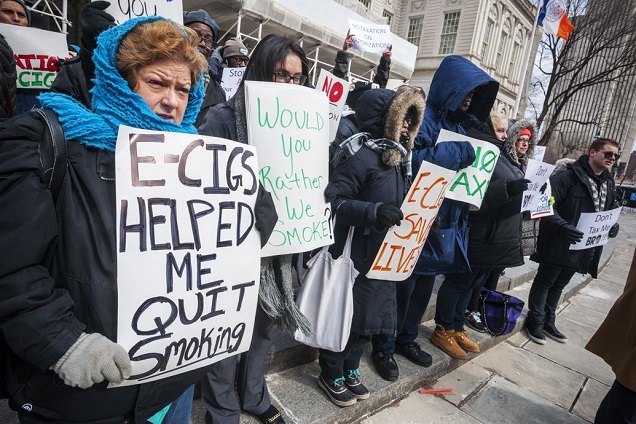
It seems like most vapers won’t really have much trouble continuing to vape in the way we do now. We might not have the same breadth of options for pre-made e-juice, and more vapers might have to start making their own coils to keep vaping, but overall we’ll be pretty much fine. The problems come if you aren’t a vaper.
For a smoker considering switching to vaping, the apparent complexity of e-cig devices is a notable downside. Where with cigarettes you just hold a flame to the end and you’re good to go, vaping devices require filling, changing coils, dealing with different settings, troubleshooting and more. It’s understandably not something every smoker is eager to start dealing with.
After the regulations come in, smokers have two choices. Firstly, they could use the primarily cigalike devices mentioned in the first section. You know, the ones with ineffective nicotine delivery, awful battery life, poor vapor production, expensive, single-use cartridges and generally more problems than I’d care to list. Oh yeah, and they’re increasingly being sold by tobacco companies who make the majority of their money from a directly competing product. They probably want dual users more than quitters.
The other option is heading to the black market, but this is a bit of a big ask for somebody just interested in trying vaping out and probably a little overwhelmed by more technical-looking devices. The result will undoubtedly be that many will opt for the cigalike devices that will come to dominate the market. And although some will quit, many will continue to smoke, and with the option of trying something more capable being made more difficult by pointless and over-reaching legislation, many won’t find something to help them move away from cigarettes any time soon.
So we may complain about what the regulations will mean for us, but the biggest impact it will have is undoubtedly on the smokers yet to switch.
Conclusion: Is This How You Protect Public Health?
As things stand, any vaper who doesn’t want to revert to antiquated technology is stuck with the prospect of black market vaping, and anybody who doesn’t want to do that can either switch to another low-risk form of nicotine consumption (like snus), start smoking again or quit nicotine altogether. The FDA and public health groups want to think that people will choose the latter option, but most of us know that this isn’t going to happen.
For smokers, the choices are virtually the same, but the “continue smoking” option is way easier than the alternatives. If you want something lower-risk that’s inherently similar, vaping is the only option, but with only ineffective devices on the market, most will just continue slowly killing themselves with cigarettes. And that is the cost of unnecessary regulation. Toss in the lack of age restrictions on the black market and you have a recipe for a certified public health disaster.
CASAA, SFATA, AEMSA, AVA and NBS are all joining forces to come up with a way to challenge the regulations, so we can only hope they come up with something great.

